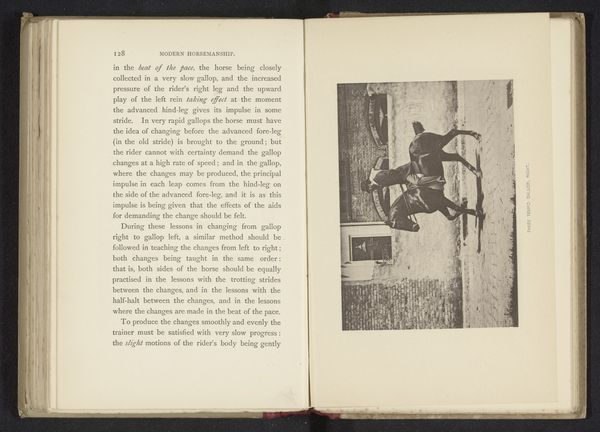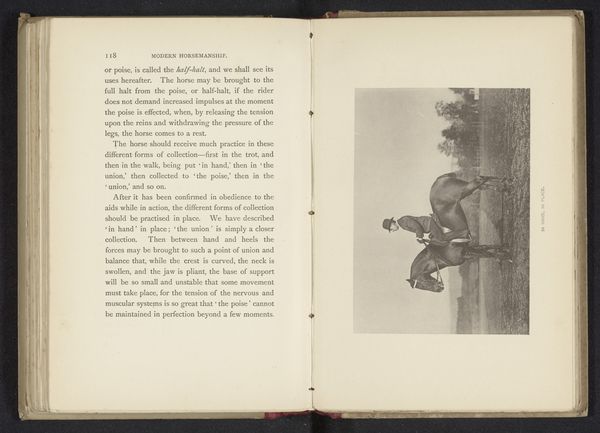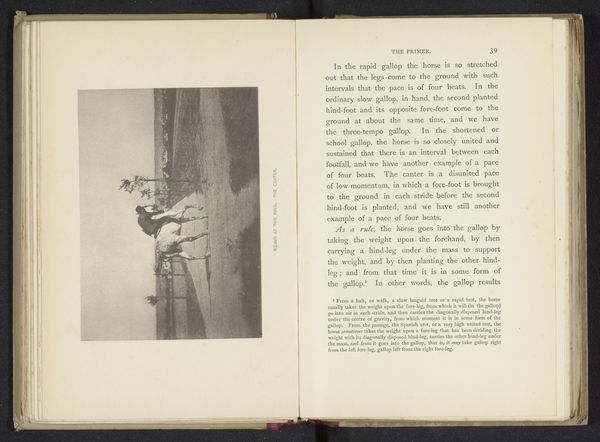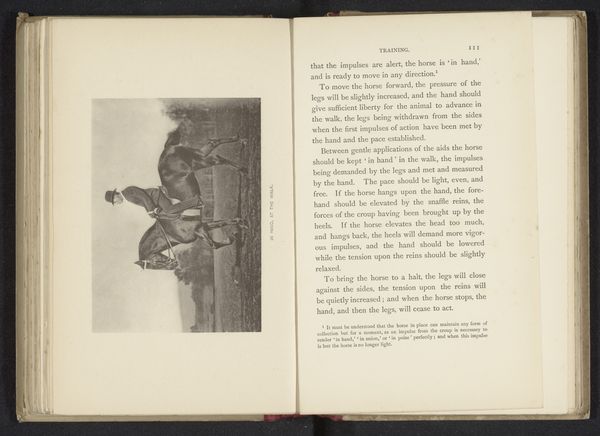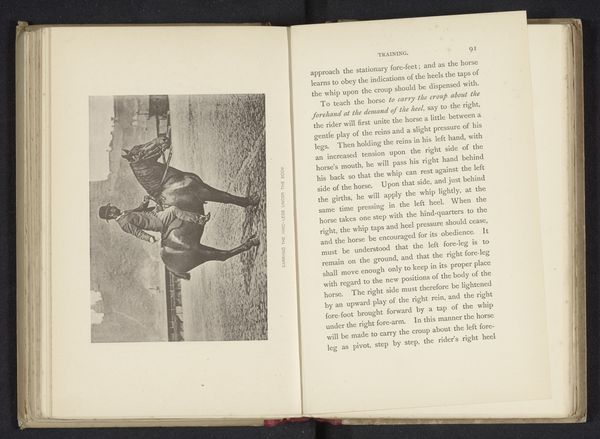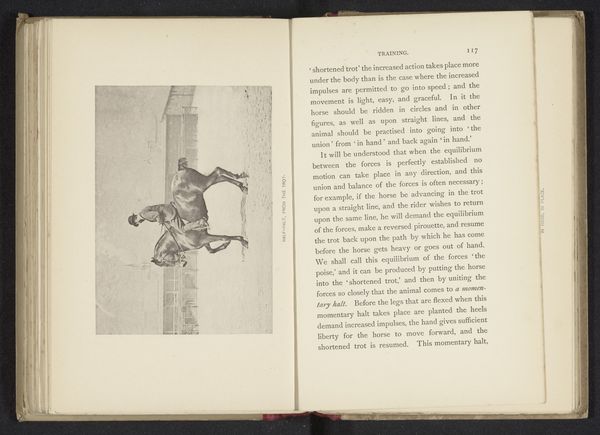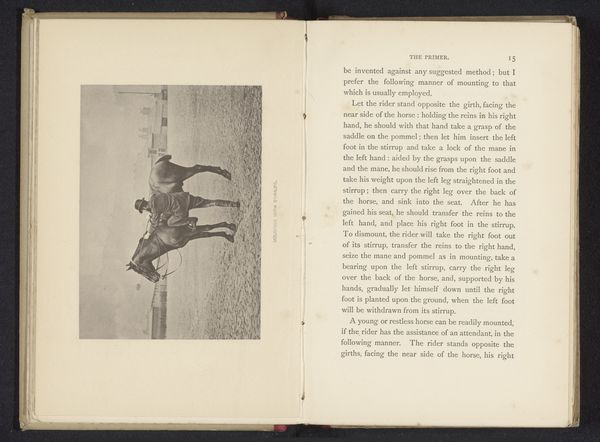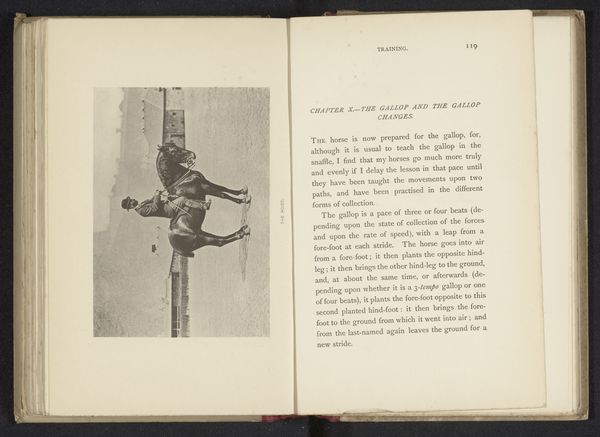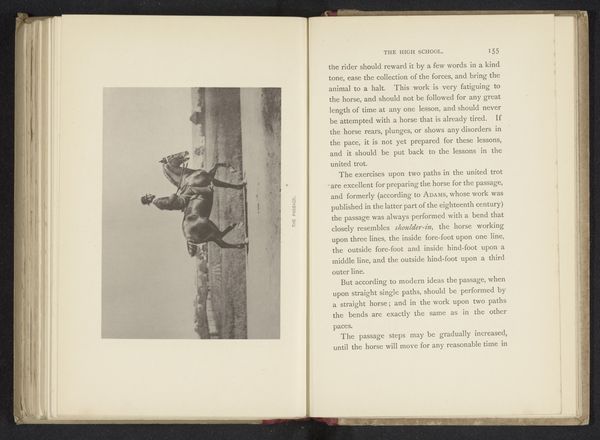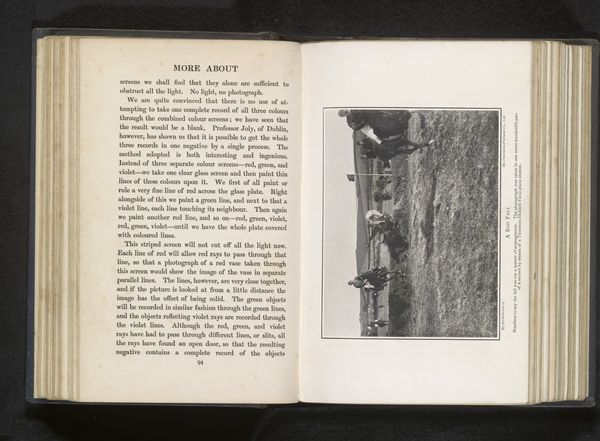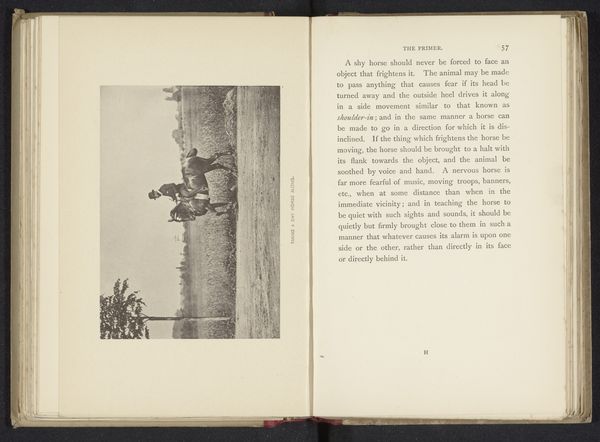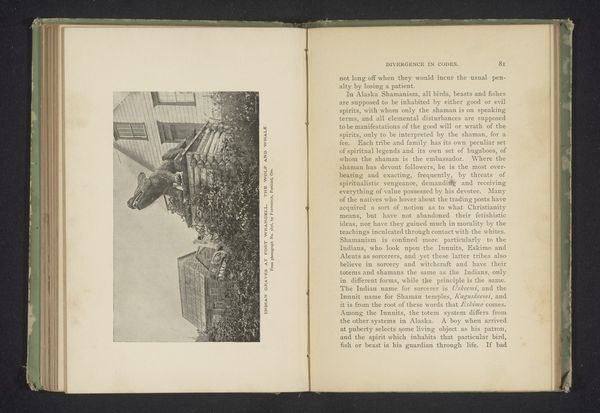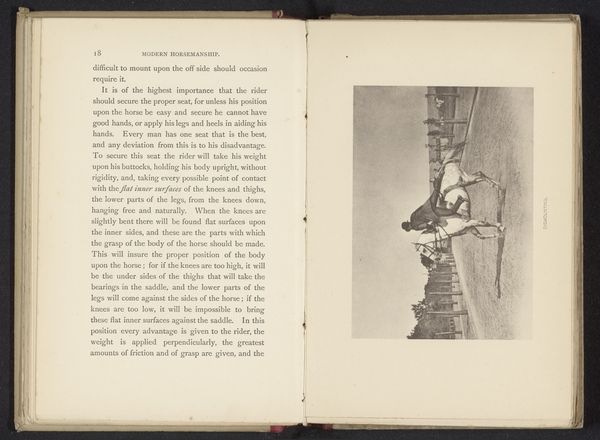
print, photography
#
portrait
# print
#
landscape
#
photography
#
horse
#
genre-painting
Dimensions: height 98 mm, width 138 mm
Copyright: Rijks Museum: Open Domain
Curator: Here we have an intriguing print titled "Man op een paard in een travers," or "Man on a horse in a travers," created before 1889 by Alexander Nicol. Editor: My immediate impression is that the piece has a somewhat staged, academic quality. It's a study in equestrian posture, isn't it? Curator: Precisely. Nicol seems deeply interested in depicting the rider and the horse during a 'travers,' a specific movement in classical dressage. This connects to broader themes of social status and the formalization of horsemanship in the 19th century. Editor: Yes, I'm drawn to the materiality of it as a print. There's something about the reproduction process that flattens the image, reducing it to almost a diagram. Do you think Nicol was exploring how the printmaking could standardize and disseminate specific ideals of skilled horsemanship to a wider audience? Curator: Undoubtedly. The mass reproducibility of printmaking would democratize this knowledge, spreading ideas of aristocratic leisure beyond the elites who historically practiced it. Moreover, note the detail given to the horse's muscular structure – a point of aesthetic, and likely commercial, value for horse breeders of the time. Editor: I am interested in what kind of paper was used and how it might affect our perception of the artwork today. Was it a cheap or more expensive method to create this artwork in that time? The print, especially the monochrome effect achieved, removes much of the color and life you'd usually associate with a scene involving animals and landscapes. Was that the intention of Nicol? Curator: Possibly, the limitations of early photographic printing contributed, but also allowed it a level of precision ideal for training and study. Think about the social function this would play at a moment when urbanization and new technologies were reshaping rural life. Editor: Considering that, the very act of isolating this maneuver through printmaking abstracts the horse from the daily grind. A very good observation, thinking of the industrial changes and societal development in those times. Curator: Well, studying such artworks certainly opens up an avenue to new discoveries. Editor: Absolutely. There are always ways of reexamining artwork, in connection to how materials impact a viewing, for example.
Comments
No comments
Be the first to comment and join the conversation on the ultimate creative platform.
